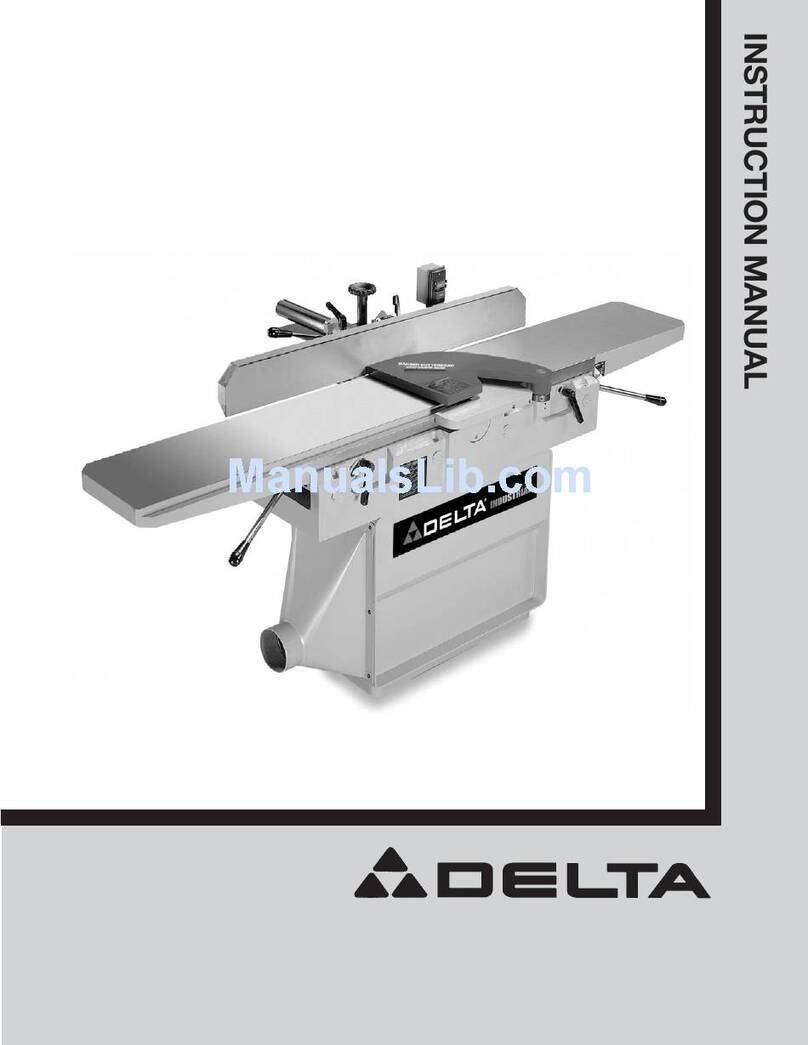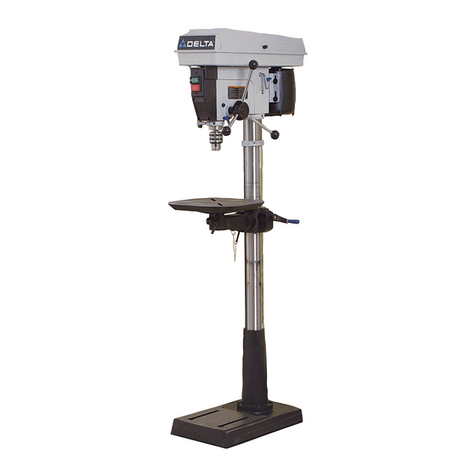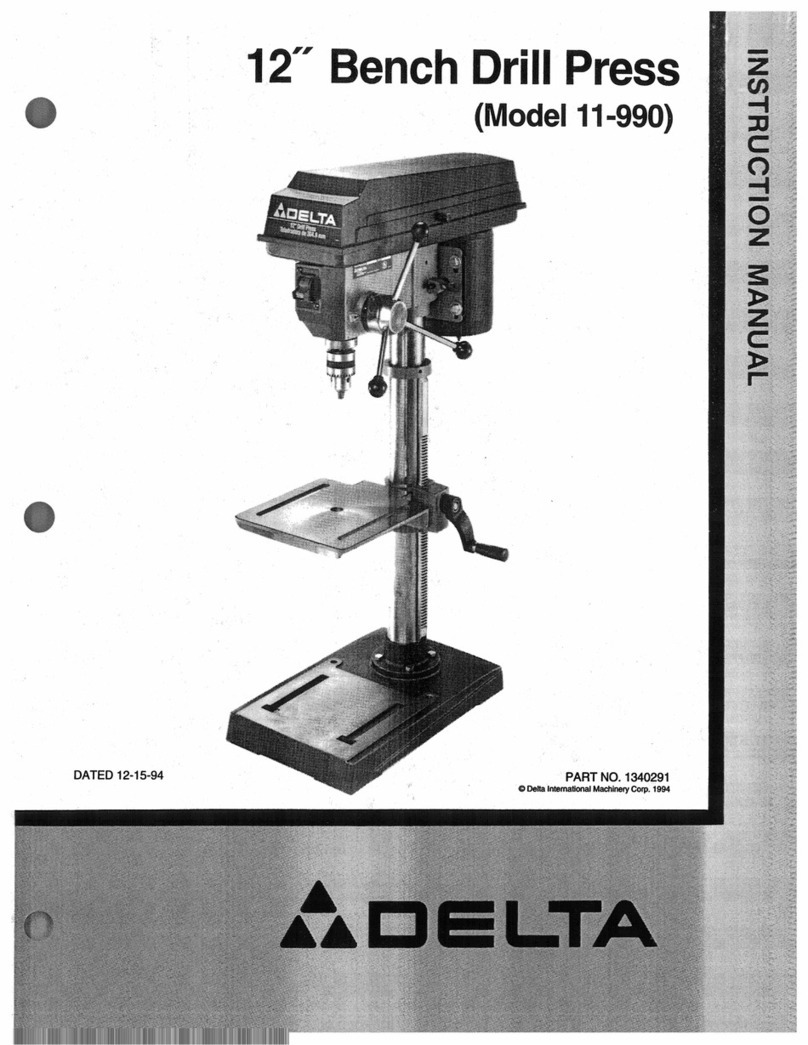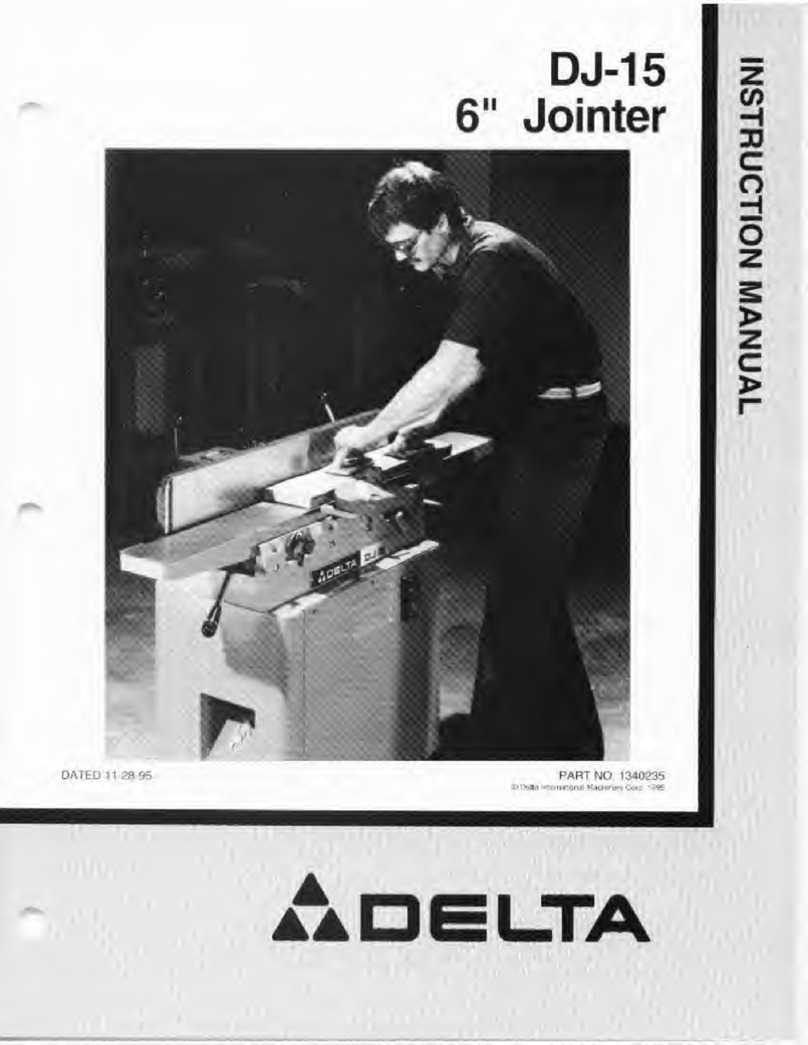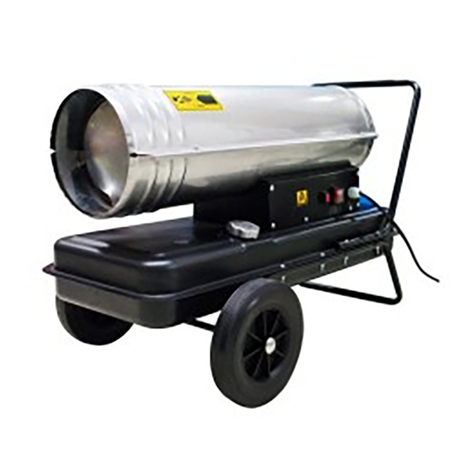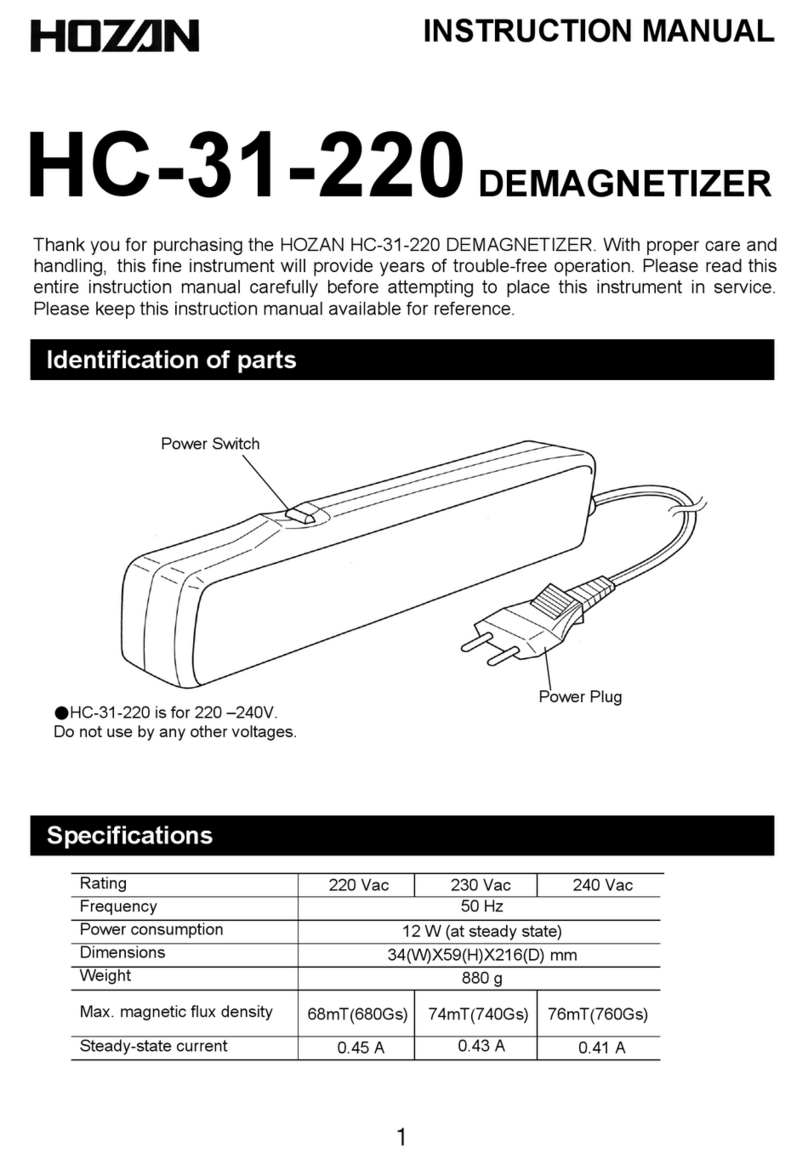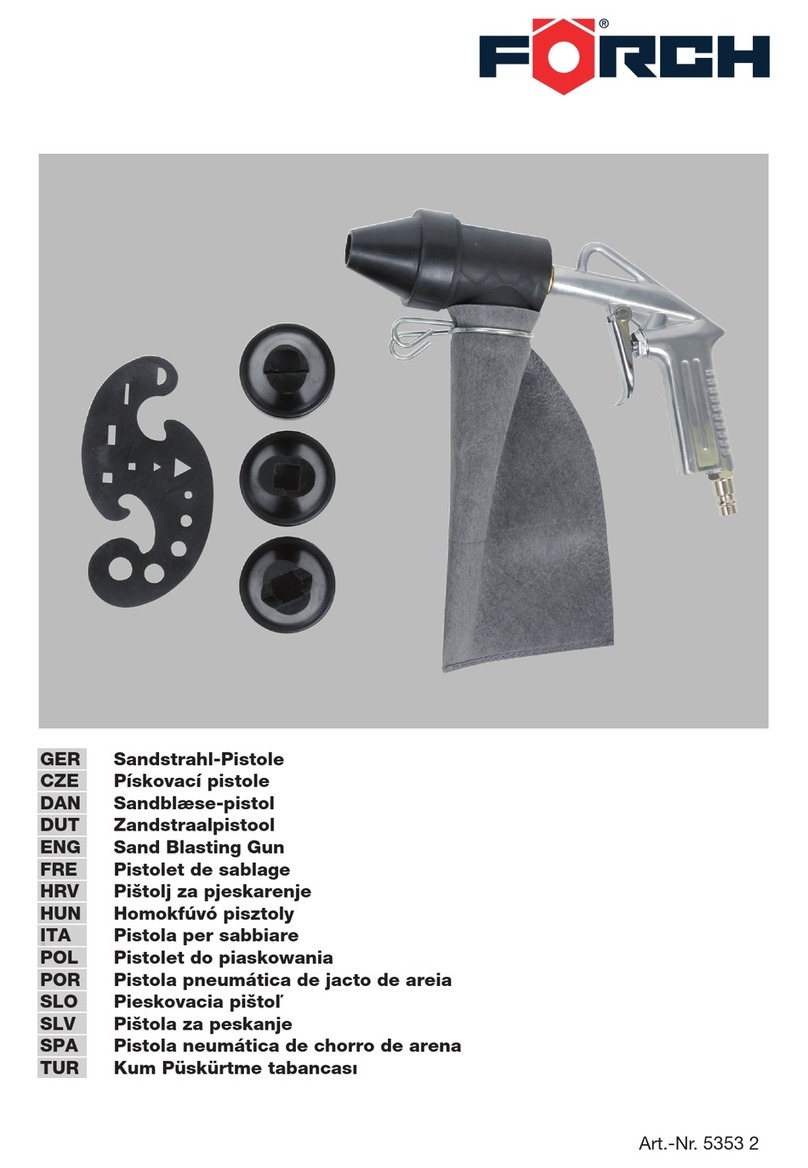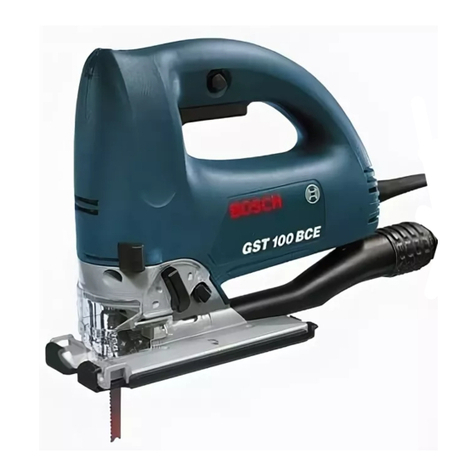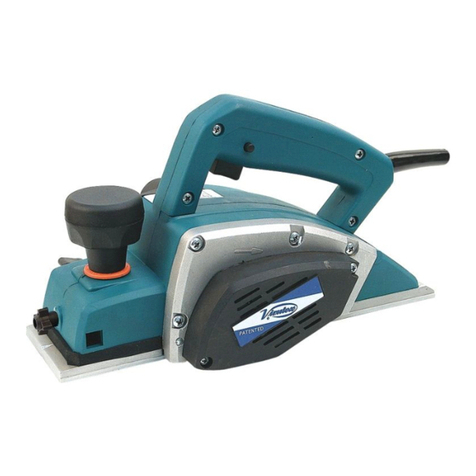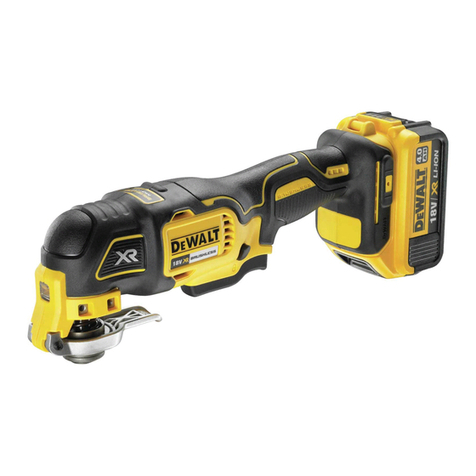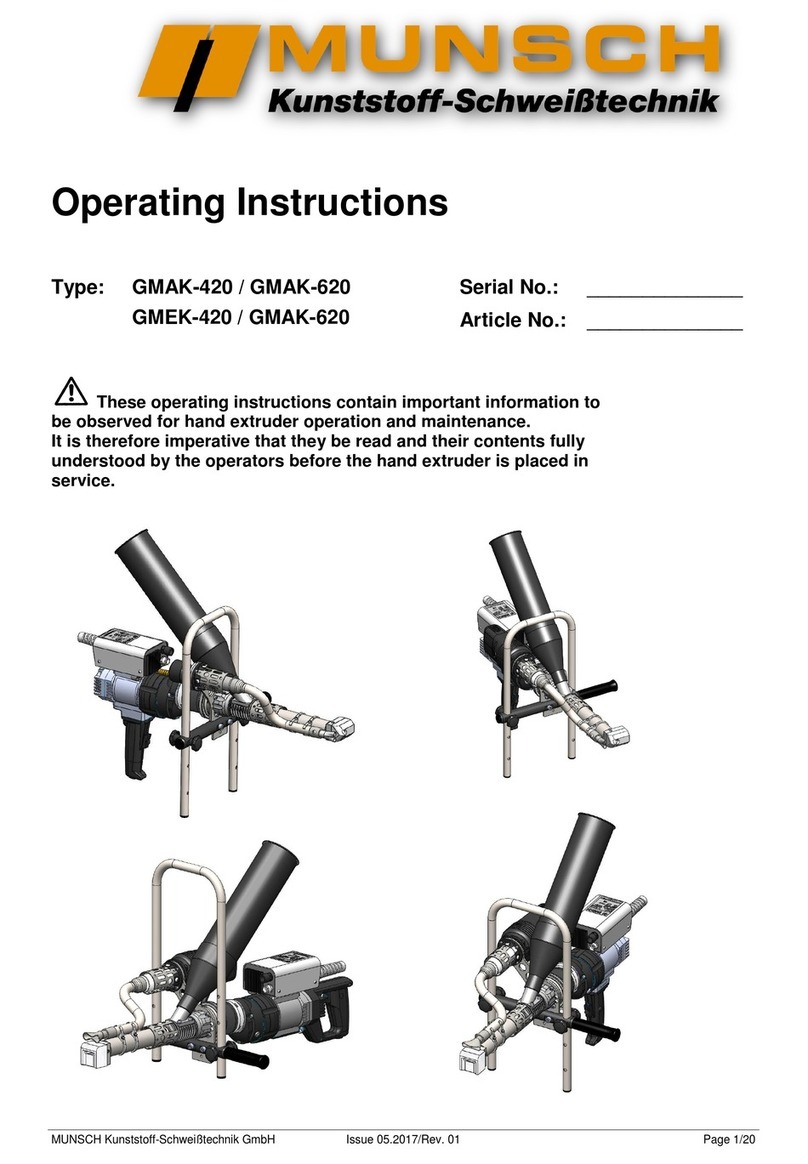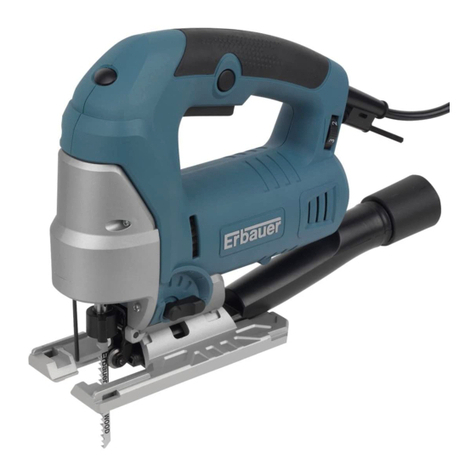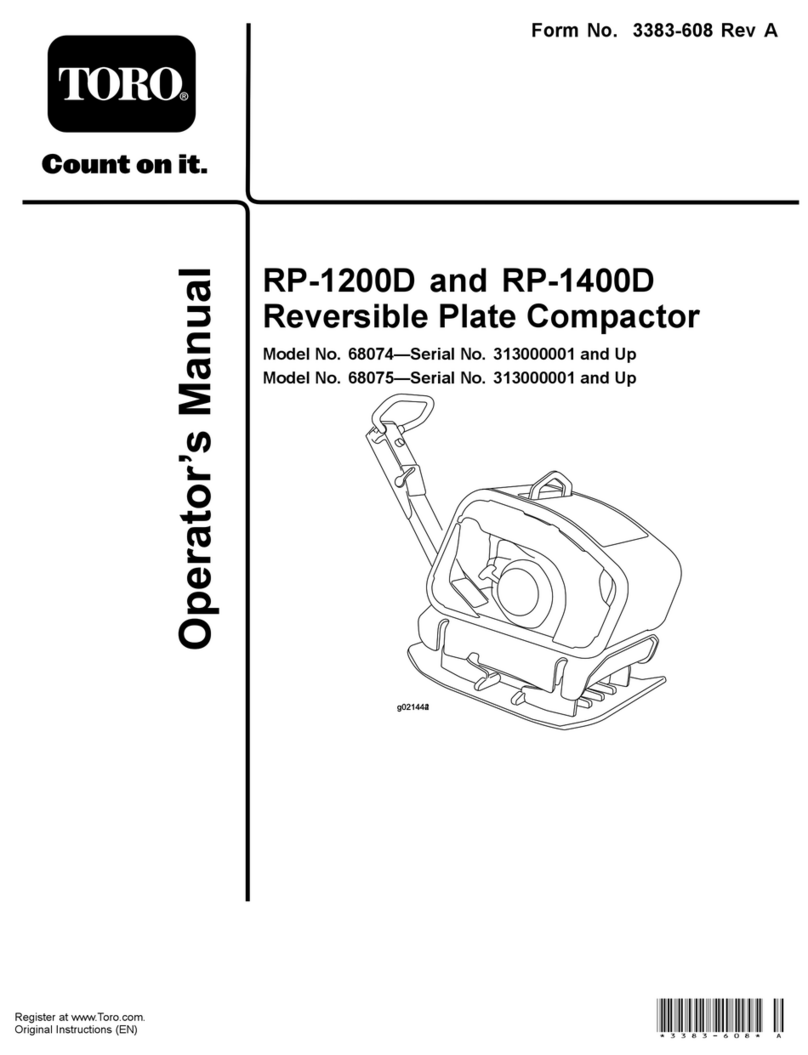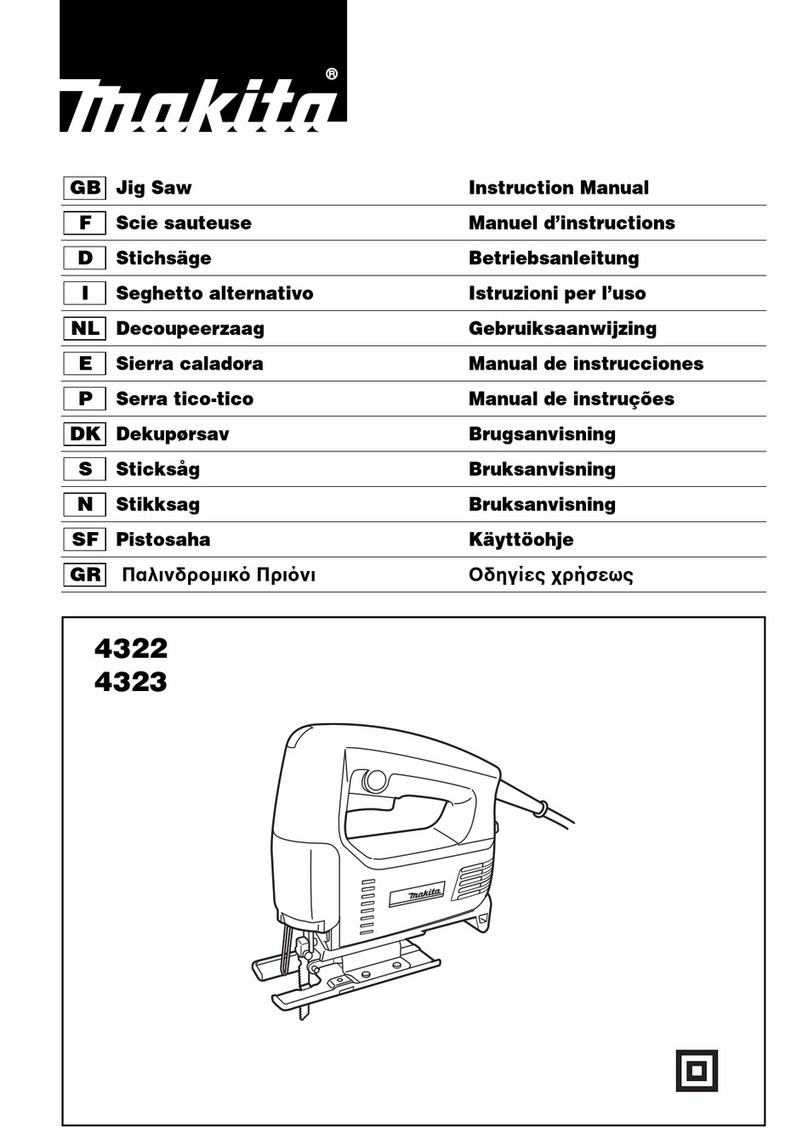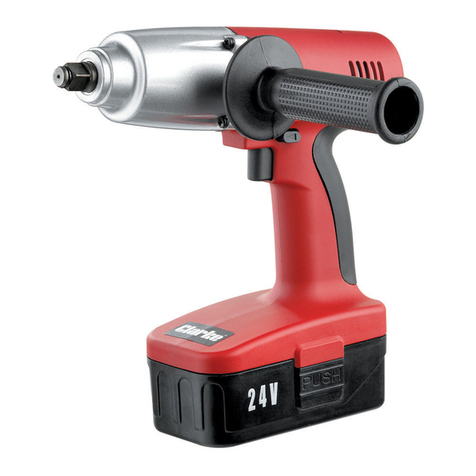Delta ShopMaster CL180JS User manual

To learn more about DELTA MACHINERY
visit our website at: www.deltamachinery.com.
For Parts, Service, Warranty or other Assistance,
please call 1-800-223-7278 (In Canada call 1-800-463-3582).
INSTRUCTION MANUAL
Cordless Jigsaw
(Model CL180JS)
PART NO. 912236 - 05-20-04
Copyright © 2004 Delta Machinery
ESPAÑOL: PÁGINA 15

Some dust created by power sanding, sawing, grinding,
drilling, and other construction activities contains chemicals
known (to the State of California) to cause cancer, birth defects or other repro-
ductive harm. Some example of these chemicals are:
●●lead from lead-based paints
●●crystalline silica from bricks and cement and other masonry products
●●arsenic and chromium from chemically-treated lumber
Your risk from these exposures varies, depending on how often you do this
type of work. To reduce your exposure to these chemicals: work in a well
ventilated area, and work with approved safety equipment, always wear
MSHA/NIOSH approved, properly fitting face mask or respirator when using
such tools.
2
SAFETY GUIDELINES - DEFINITIONS
indicates an imminently hazardous situation which, if not
avoided, will result in death or serious injury.
indicates a potentially hazardous situation which, if not
avoided,could result in death or serious injury.
indicates a potentially hazardous situation which, if not
avoided,may result in minor or moderate injury.
used without the safety alert symbol indicates potentially
hazardous situation which, if not avoided, may result in
property damage.
This manual contains information that is important for you to know and under-
stand. This information relates to protecting YOUR SAFETY and PREVENTING
EQUIPMENT PROBLEMS. To help you recognize this information, we use the
symbols below. Please read the manual and pay attention to these sections.
Read and understand all instructions. Failure to fol-
low all instructions listed below, may result in electric shock, fire and/or
serious personal injury.
SAVE THESE INSTRUCTIONS.
GENERAL SAFETY RULES
WORK AREA
1. Keep your work area clean and well lit. Cluttered benches and dark
areas invite accidents.
2. Do not operate power tools in explosive atmospheres, such as in the
presence of flammable liquids, gases, or dust. Power tools create sparks
which may ignite the dust or fumes.
3. Keep bystanders, children, and visitors away while operating a
power tool. Distractions can cause you to lose control.
ELECTRICAL SAFETY
1. Do not abuse the cord. Never use the cord to carry the tool. Keep
cord away from heat, oil, sharp edges or moving parts. Replace damaged
cords immediately. Damaged cords increase the risk of electric shock.
2. A battery operated tool with integral batteries or a separate battery
pack must be recharged only with the specified charger for the battery.
A charger that may be suitable for one type of battery may create a risk of fire
when used with another battery.
3. Use battery operated tool only with specifically designated battery
pack. Use of any other batteries may create a risk of fire.
PERSONAL SAFETY
1. Stay alert, watch what you are doing, and use common sense when
operating a power tool. Do not use tool while tired or under the influence
of drugs, alcohol, or medication. A moment of inattention while operating
power tools may result in serious personal injury.

3
2. Dress properly. Do not wear loose clothing or jewelry. Contain long
hair. Keep your hair, clothing, and gloves away from moving parts. Loose
clothes, jewelry, or long hair can be caught in moving parts.
3. Avoid accidental starting. Be sure switch is in the locked or off posi-
tion before inserting battery pack. Carrying tools with your finger on the
switch or inserting the battery pack into a tool with the switch on invites acci-
dents.
4. Remove adjusting keys or wrenches before turning the tool on. A
wrench or a key that is left attached to a rotating part of the tool may result in
personal injury.
5. Do not overreach. Keep proper footing and balance at all times.
Proper footing and balance enables better control of the tool in unexpected
situations.
6. Use safety equipment. Always wear eye protection. Dust mask, non-
skid safety shoes, hard hat, or hearing protection must be used for appropri-
ate conditions.
7.Use certified safety equipment. Eye protection equipment should com-
ply with ANSI Z87.1 standards, hearing equipment should comply with ANSI
S3.19 standards, and dust mask protection should comply with
MSHA/NIOSH certified respirator standards.
TOOL USE AND CARE
1. Use clamps or other practical way to secure and support the work-
piece to a stable platform. Holding the work by hand or against your body
is unstable and may lead to loss of control.
2. Do not force tool. Use the correct tool for your application. The cor-
rect tool will do the job better and safer at the rate for which it is designed.
3. Do not use tool if switch does not turn it on or off. Any tool that can-
not be controlled with the switch is dangerous and must be repaired.
4. Disconnect battery pack from tool and place the switch in the locked
or OFF position before making any adjustments, changing accessories,
or storing the tool. Such preventive safety measures reduce the risk of start-
ing the tool accidentally.
5. Store idle tools out of reach of children and other untrained persons.
Tools are dangerous in the hands of untrained users.
6. When battery pack is not in use, keep it away from other metal
objects like: paper clips, coins, keys, nails, screws, or other small metal
objects that can make a connection from one terminal to another.
Shorting the battery terminals together may cause sparks, burns, or a fire.
7. Maintain tools with care. Keep cutting tools sharp and clean. Properly
maintained tools with sharp cutting edge are less likely to bind and are easier
to control.
8. Check for misalignment or binding of moving parts, breakage of
parts, and any other condition that may affect the tool’s operation. If dam-
aged, have the tool serviced before using. Many accidents are caused by
poorly maintained tools.
9. Use only accessories that are recommended by the manufacturer for
your model. Accessories that may be suitable for one tool may create a risk
of injury when used on another tool.
SERVICE
1. Tool service must be performed only by qualified repair personnel.
Service or maintenance performed by unqualified personnel could result in a
risk of injury.
2. When servicing a tool, use only identical replacement parts. Follow
instructions in the Maintenance Section of this manual. Use of unautho-
rized parts or failure to follow Maintenance Instructions may create a risk of
shock or injury.

4
ADDITIONAL SPECIFIC SAFETY RULES
1. Hold tool by insulated gripping surfaces when performing an operation
where the cutting tools may contact hidden wiring. Contact with a “live” wire
will make exposed metal parts of the tool “live” and shock the operator.
2. Be aware that this tool is always in an operating condition, because it
does not have to be plugged into an electrical outlet. Always set the trigger
switch to the locked OFF position when installing or removing the battery pack
or saw blade.
3. Keep blades sharp.
4. Keep hands away from cutting area. When sawing never reach under-
neath or behind the material being cut for any reason.
5. When you have finished a cut be careful not to come into contact with
the blade. Turn off the motor immediately.
6. EXERCISE EXTREME CAUTION WHEN BLIND CUTTING TO
BE CERTAIN THAT THERE ARE NO FOREIGN OBJECTS SUCH AS ELEC-
TRICAL WIRE, CONDUIT, PLUMBING PIPES, ETC., THAT MAY COME INTO
CONTACT WITH THE BLADE.
7. Never hold work in your hand, lap, or against other parts of your body
when sawing.
8. Some wood contains preservatives which can be toxic. Take extra care
to prevent inhalation and skin contact when working with these materials.
Request, and follow, all safety information available from your material suppli-
er.
Technical Service Manager
Delta Machinery
4825 Highway 45 North
Jackson, TN 38305
There are certain applications for which this tool was
designed. Delta strongly recommends that this tool NOT be modified and/or used
for any application other than for which it was designed. If you have any questions
relative to its application DO NOT use the tool until you have written Delta and we
have advised you.
SYMBOL DEFINITION
V ........................ volts
A ........................ amperes
Hz ........................ hertz
W ........................ watts
kW ........................ kilowatts
µF ........................ microfarads
l ........................ liters
kg ........................ kilograms
N/cm2........................ newtons per square centimeter
Pa ........................ pascals
h ........................ hours
min ........................ minutes
s ........................ seconds
........................ alternating current
SYMBOLS

5
3 ........................ three-phase alternating current
3N........................ three-phase alternating current with neutral
........................ direct current
n0........................ no load speed
........................ alternating or direct current
...................... Class II Construction
........................ splash-proof construction
........................ watertight construction
…/min ........................ revolutions or reciprocation per minute
SAFETY INSTRUCTIONS FOR CHARGER
AND BATTERIES
1. SAVE THESE INSTRUCTIONS. This manual contains important safety
and operating instructions for Delta Battery Charger.
2. Before using a battery charger, read all instructions and cautionary
markings on (1) battery charger, (2) battery pack, and (3) product using bat-
tery.
3. To reduce risk of injury, a Delta charger should only be used
to charge a Delta battery pack. Other types of batteries may burst causing
personal injury and damage. Do not charge a Delta battery pack with any
other charger.
4. Do not expose charger to rain, snow or frost.
5. Do not abuse cord. Never carry charger by cord or yank it to disconnect
from receptacle. Pull by plug rather than cord when disconnecting charger.
Have damaged or worn power cord and strain reliever replaced immediately.
DO NOT ATTEMPT TO REPAIR POWER CORD.
6. Make sure cord is located so that it will not be stepped on, tripped over,
or otherwise subjected to damage or stress.
7. Do not use an extension cord unless absolutely necessary. Use of
improper extension cord could result in a risk of fire and electric shock. If an
extension cord must be used, make sure:
A. That the pins on plug of extension cord are the same number, size and
shape as those of plug on charger.
B. That the extension cord is properly wired and in good electrical condi-
tion.
C. Wire Size of cord is at least as specified in following chart:
D. If an extension cord is to be used outdoors it must be marked with the
suffix W-A or W following the cord type designation. For example –
SJTW-A to indicate it is acceptable for outdoor use.
8.
Do not operate
charger with damaged cord or plug – have them replaced
immediately, to avoid a hazard. DO NOT ATTEMPT TO REPAIR POWER CORD.
9. Do not operate charger if it has received a sharp blow, been dropped, or
otherwise damaged in any way; take it to a qualified serviceman.
LENGTH OF CORD IN FEET 25 50 100 150
AWG SIZE OF CORD 18 18 18 16

6
10. Do not disassemble charger or battery pack. Take it to a qualified ser-
viceman when service or repair is required. Incorrect reassembly may result in
a risk of electric shock or fire.
11. Unplug charger from outlet before attempting any maintenance or clean-
ing – to reduce risk of electric shock.
12. Charge the battery pack in a well ventilated place, do not cover the
charger and battery pack with a cloth, etc., while charging.
13. Do not store the charger or battery pack in locations where the temper-
ature may reach or exceed 122°F (50°C) (such as a metal tool shed, or a car
in the summer), which can lead to deterioration of the storage battery.
14. Do not charge battery pack when the temperature is BELOW 40°F
(4.4°C) or ABOVE 104°F(40°C). This is very important for proper operation.
15. Do not incinerate battery pack. It can explode in a fire.
16. Do not charge battery in damp or wet locations.
17. Do not attempt to charge any other cordless tool or battery pack with the
Delta charger.
18. Do not short across the terminals of the battery pack: EXTREMELY
HIGH TEMPERATURES COULD CAUSE PERSONAL INJURY OR FIRE.
19. Double insulated tools are equipped with a polarized plug (one blade
is wider than the other). This plug will fit in a polarized outlet only one
way. If the plug does not fit fully in the outlet, reverse the plug. If it still
does not fit, contact a qualified electrician to install a polarized outlet. Do
not change the plug in any way. Double Insulation eliminates the need
for the three wire grounded power cord and grounded power supply system.
20. Dispose of expended batteries properly. The
Delta Battery Packs contains rechargeable, nickel-cad-
mium batteries. These batteries must be recycled or
disposed of properly. Drop off expended battery packs
at your local replacement battery retailer, your local
recycling center, or at a Delta Service Center (see list on
back page of this manual). Applicable fees for the col-
lection and recycling of these batteries (in the United
States), have been paid to the RBRC™. For further infor-
mation, call: 1-800-8-BATTERY.
REPLACEMENT PARTS
When servicing use only identical replacement parts.
RBRC™ is a Trademark of
the Rechargeable Battery
Recycling Corporation.
FUNCTIONAL DESCRIPTION
FOREWORD
Delta Model CL180JS Cordless Jigsaw is designed to use Universal-Shank
Blades for cutting materials of the following MAXIMUM thickness: wood 41/3",
plastic and fiberglass 11/4", aluminum and nonferrous metals 13/16", mild steel
3/8", and stainless steel 1/8".
CHARGING THE BATTERY
CHARGING THE BATTERY PACK GENERAL
Before using your cordless tool for the first time, the battery pack should be
fully charged. If the battery pack is installed in the tool, remove it by following
instructions under INSTALLING OR REMOVING BATTERY PACK.

As a battery pack approaches the discharged state, you will notice a sharp
drop in tool performance. When the tool is unable to perform the task at hand,
it is time to recharge the battery pack. Recharging the battery pack before this
condition is reached will reduce the total work life of the pack. Discharging the
pack beyond this point can damage the pack.
NOTE: Battery temperature will increase during and shortly after use.
Batteries may not accept a full charge if they are charged immediately
after use. Allow the battery pack to cool to room temperature before
charging for best results.
The battery charger must rest on the four pads provided on the bot-
tom of the case. Vent slots in top and bottom of charger must not be obstructed.
Do not charge battery when temperature is BELOW 40°F (4.4°C) or ABOVE 104°F
(40°C).
7
NORMAL CHARGING
Make sure power circuit voltage is the same as that shown on the charger
specification plate. Connect charger to power source. The orange light (A) Fig.
2, should light up. This indicates the charger is ready to begin charging.
Position battery pack on charger, align rails (D) Fig. 2 and Fig. 3, on battery
charger with four tabs (C) Fig. 3 on battery pack. Slide battery forward onto
charger until it stops.
The red light (B) Fig. 2, should begin to glow continuously, indicating that the
battery pack is receiving a “Fast Charge” (if the red light does not glow contin-
uously, and the green light (C) Fig. 2, begins to glow: remove battery and re-
insert when battery temperature is between 40°F (4.4°C) and 104°F (40°C). After
approximately one hour, the “Fast Charge” indicator light (red) should go out
indicating that the battery pack is fully charged and that the charger is now in a
“Trickle Charge” mode (green light). The battery pack can be left on “Trickle
Charge” until you are ready to use it.
Depending on room temperature, line voltage, and existing charge level, initial
battery charging may take longer than one hour.
Disconnect charger from power source when not in use.
Special Charge Modes: If all lights go out after the battery is inserted, the
charger has entered pre-charge mode. In approximately 5-10 minutes, the
orange and red lights should turn on indicating that fast charge has been initi-
ated. If all lights remain off after 15 minutes, remove the battery. The orange
light should glow. Reinsert the battery. If the orange light goes out when the
battery is inserted and all lights remain off for 15 minutes, battery should be
replaced.
After inserting battery, if the orange light is on while the red and green lights
remain off, remove battery and re-insert. If the orange light is on while the red
and green lights remain off, battery should be replaced.
Fig. 2 Fig. 3
B
C
A
DD
C
D
D

8
INSTALLING OR REMOVING BATTERY PACK
TO INSTALL BATTERY PACK: Align
rails (A) Fig. 4, on battery pack with
slots on tool and push battery pack
onto tool until it locks in place.
TO REMOVE BATTERY PACK:
Depress the battery release button
(B) Fig. 4, and pull battery pack out of
tool.
Fig. 4
ASSEMBLY
BLADE INSTALLATION
1. Raise the blade guard (A) Fig. 5
by lifting up on tab (B).
2. Depress button (C) Fig. 6, and
gently squeeze the switch trigger (D)
until the blade shaft moves slowly
and stop the motor when the blade
shaft is at or near the bottom of its
stroke as shown in Fig. 7.
3. REMOVE BAT-
TERY PACK.
Fig. 5
Fig. 6
4. Loosen the two screws (F) Fig. 7
on the blade shaft.
Fig. 7
A
B
A
B
C
D
F

9
5. With the teeth of the blade fac-
ing away from the saw, insert the
blade through the blade guide (G)
Fig. 8, into the blade holder (H) as far
as it will go and tighten the two
screws (F) Fig. 7.
6. Lower the blade guard (A) Fig.
5, by pushing down on tab (B).
7. Install battery pack.
Fig. 8
AVOID CONTACT
WITH THE BLADE TEETH TO
PREVENT PERSONAL INJURY.
BLADE REMOVAL
Follow the blade installation proce-
dure and remove the blade instead
of installing the blade.
SAW OPERATION
TO START AND STOP SAW
THIS TOOL IS
ALWAYS IN AN OPERATING CON-
DITION BECAUSE IT DOES NOT
HAVE TO BE PLUGGED INTO AN
ELECTRICAL OUTLET. KEEP
HANDS, BODY, AND CLOTHING
CLEAR OF THE BLADE WHEN A
BATTERY PACK IS INSTALLED IN
THE SAW.
1. Install battery pack.
2. Hold down button (A) Fig. 9
from either side of handle (B).
3. Squeeze power trigger (C) Fig. 9
to start the blade in motion.
4. Release power trigger (C) Fig. 9
to stop the blade.
Fig. 9
VARIABLE SPEED
This saw is equipped with a variable speed control switch. The speed range is
0 to 2700 SPM. The speed is adjusted by squeezing the power trigger. The more
the power trigger is squeezed the higher the speed.
Use higher speed for fast cutting when finish and accuracy are not critical.
Use slower speed when accuracy and finish are critical or for delicate materi-
als.
G
H
A
B
C

10
BASE ADJUSTMENT
REMOVE THE BATTERY.
AVOID CONTACT WITH THE BLADE TEETH TO PREVENT
PERSONAL INJURY.
The base may be adjusted two
ways, front to rear and tilted either
left or right for making bevel cuts.
The base has a detente at the 0 (90
degree) setting and at 45 degree set-
ting both left and right of center.
The base is set at its forward most
position at the factory. The base can
be adjusted to the rear for making
flush cuts around walls and other
similar areas. To move the base for- Fig. 10
ward or backward, turn the saw on its side, loosen screws (A), Fig. 10, move
the base to the desired position and retighten the screws.
NOTE: When making bevel cuts, the base should be set to the
forward most position.
USING THE SAW
First, secure the material in a bench vise or with clamps to the work table. This
is especially important when sawing small pieces or thin material. As the work
progresses in scroll or curved cut-out pieces, the material can be readjusted
to accommodate the movement of the saw. If the work is large enough it can
be held by hand across saw horses. The saw cuts freely with only light for-
ward feed pressure on the tool. Forcing the saw will not make it cut faster.
To start the cut, secure the work, mark the line of cut clearly, place the forward
edge of the saw base firmly on the edge of the material, start the motor and
move the blade into the work.
DO NOT FORCE, LET THE SAW DO THE WORK. Move the machine forward
only rapidly enough to keep the blade cutting.
You will find that the open throat and clear forward edge of the saw base make
it easy to follow the line and cut closely to the pattern. You need not cut over-
size for hand finishing or sanding on most materials.The smoothness of cut
will often make further sanding unnecessary.
Avoid contact with the blade teeth to prevent personal injury.
A

11
BLADE WRENCH STORAGE
The tool has a blade/wrench storage
area located on the back of the tool.
To open the blade/wrench storage
unit, pull out on tab (A) Fig. 11.
The blades and base adjustment
wrench can be stored in the opening
as shown in Fig. 12.
Fig. 11
Fig. 12
A

12
MAINTENANCE
KEEP TOOL CLEAN
All plastic parts should be cleaned with a soft damp cloth. NEVER use sol-
vents to clean plastic parts. They could very possibly dissolve or otherwise
damage the material.
FAILURE TO START
Should your tool fail to start, make sure battery pack is charged and properly
installed in tool.
BATTERY
The battery pack will discharge by itself without damage if stored for long peri-
ods of time, and may require recharging before use.
LUBRICATION
For your continued safety and electrical protection, lubrication and service on
this tool should ONLY be performed by an AUTHORIZED Delta SERVICE STA-
TION or a PORTER-CABLE•DELTA FACTORY SERVICE CENTER.
At approximately 100 hours of use, take or send your tool to your nearest
Authorized Delta Service Station to be thoroughly cleaned and inspected;
worn parts replaced, when necessary; relubricated with fresh lubricant, and
performance tested.
SERVICE AND REPAIRS
All quality tools will eventually require servicing or replacement of parts due to
wear from normal use. These operations, including brush inspection and
replacement, should ONLY be performed by either an AUTHORIZED DELTA
SERVICE STATION or a PORTER-CABLE•DELTA FACTORY SERVICE CEN-
TER. All repairs made by these agencies are fully guaranteed against defec-
tive material and workmanship. We cannot guarantee repairs made or
attempted by anyone other than these agencies.
Should you have any questions about your tool, feel free to write us at any
time. In any communications, please give all information shown on the name-
plate of your tool (model number, type, serial number, etc.).

13
A complete line of accessories is available from your Porter-Cable•
Delta Supplier, Porter-Cable•Delta Factory Service Centers, and Delta
Authorized Service Stations. Please visit our Web Site www.deltama-
chinery.com for a catalog or for the name of your nearest
supplier.
Since accessories other than those offered by Porter-
Cable•Delta, have not been tested with this product use of such
accessories could be hazardous. For safest operation, only Porter-Cable
•Delta recommended accessories should be used with this product.
ACCESSORIES

Two Year Limited New Product Warranty
Delta will repair or replace, at its expense and at its option, any new Delta
machine, machine part, or machine accessory which in normal use has proven to
be defective in workmanship or material, provided that the customer returns the
product prepaid to a Delta factory service center or authorized service station
with proof of purchase of the product within two years and provides Delta with
reasonable opportunity to verify the alleged defect by inspection. For all refur-
bished Delta product, the warranty period is 180 days. Delta may require that
electric motors be returned prepaid to a motor manufacturer’s authorized station
for inspection and repair or replacement. Delta will not be responsible for any
asserted defect which has resulted from normal wear, misuse, abuse or repair or
alteration made or specifically authorized by anyone other than an authorized
Delta service facility or representative. Under no circumstances will Delta be
liable for incidental or consequential damages resulting from defective products.
This warranty is Delta’s sole warranty and sets forth the customer’s exclusive
remedy, with respect to defective products; all other warranties, express or
implied, whether of merchantability, fitness for purpose, or otherwise, are
expressly disclaimed by Delta.
14

The following are trademarks of PORTER-CABLE
•
DELTA (Las siguientes son marcas registradas de PORTER-CABLE
•
DELTA S.A.) (Les marques
suivantes sont des marques de fabriquant de la PORTER-CABLE
•
DELTA): Auto-Set®, BAMMER®, B.O.S.S.®, Builder’s Saw®, Contractor’s Saw®,
Contractor’s Saw II™, Delta®, DELTACRAFT®, DELTAGRAM™, Delta Series 2000™, DURATRONIC™, Emc²™, FLEX®, Flying Chips™, FRAME
SAW®, Grip Vac™, Homecraft®, INNOVATION THAT WORKS®, Jet-Lock®, JETSTREAM®, ‘kickstand®, LASERLOC®, MICRO-SET®, Micro-Set®,MIDI
LATHE®, MORTEN™, NETWORK™, OMNIJIG®, POCKET CUTTER®, PORTA-BAND®, PORTA-PLANE®, PORTER-CABLE®&(design), PORTER-
CABLE®PROFESSIONAL POWER TOOLS, PORTER-CABLEREDEFINING PERFORMANCE™, Posi-Matic®, Q-3®&(design), QUICKSAND®&(design),
QUICKSET™, QUICKSET II®, QUICKSET PLUS™, RIPTIDE™&(design), SAFE GUARD II®, SAFE-LOC®, Sanding Center®, SANDTRAP®&(design),
SAW BOSS®, Sawbuck™, Sidekick®, SPEED-BLOC®, SPEEDMATIC®, SPEEDTRONIC®, STAIR EASE®, The American Woodshop®&(design), The
Lumber Company®&(design), THE PROFESSIONAL EDGE®, THE PROFESSIONAL SELECT®, THIN-LINE™, TIGER®, TIGER CUB®, TIGER SAW®,
TORQBUSTER®, TORQ-BUSTER®, TRU-MATCH™, TWIN-LITE®, UNIGUARD®, Unifence®, UNIFEEDER™, Unihead®, Uniplane™, Unirip®, Unisaw®,
Univise®, Versa-Feeder®, VERSA-PLANE®, WHISPER SERIES®,
WOODWORKER’S CHOICE™.
Trademarks noted with ™ and ® are registered in the United States Patent and Trademark Office and may also be registered in other countries.
Las Marcas Registradas con el signo de ™ y ® son registradas por la Oficina de Registros y Patentes de los Estados Unidos y también pueden
estar registradas en otros países. Marques déposées, indiquées par la lettre ™ et ®, sont déposées au Bureau des brevets d’invention et mar-
ques déposées aux Etats-Unis et pourraient être déposées aux autres pays.
PORTER-CABLE • DELTA SERVICE CENTERS
(CENTROS DE SERVICIO DE PORTER-CABLE • DELTA)
(CENTRE DE SERVICE PORTER-CABLE • DELTA)
Parts and Repair Service for Porter-Cable
•
Delta Power Tools are Available at These Locations
(Obtenga Refaccion de Partes o Servicio para su Herramienta en los Siguientes Centros de Porter-Cable
•
Delta)
(Locations où vous trouverez les pièces de rechange nécessaires ainsi qu’un service d’entretien)
Authorized Service Stations are located in many large cities. Telephone 800-487-8665 or 731-541-6042 for assistance locating one. Parts and
accessories for Porter-Cable
•
Delta products should be obtained by contacting any Porter-Cable
•
Delta Distributor, Authorized Service Center,
or Porter-Cable
•
Delta Factory Service Center. If you do not have access to any of these, call 888-848-5175 and you will be directed to the near-
est Porter-Cable
•
Delta Factory Service Center. Las Estaciones de Servicio Autorizadas están ubicadas en muchas grandes ciudades. Llame al
800-487-8665 ó al 731-541-6042 para obtener asistencia a fin de localizar una. Las piezas y los accesorios para los productos Porter-Cable
•
Delta deben obtenerse poniéndose en contacto con cualquier distribuidor Porter-Cable
•
Delta, Centro de Servicio Autorizado o Centro de
Servicio de Fábrica Porter-Cable
•
Delta. Si no tiene acceso a ninguna de estas opciones, llame al 888-848-5175 y le dirigirán al Centro de
Servicio de Fábrica Porter-Cable
•
Delta más cercano. Des centres de service agréés sont situés dans beaucoup de grandes villes. Appelez au
800-487-8665 ou au 731-541-6042 pour obtenir de l’aide pour en repérer un. Pour obtenir des pièces et accessoires pour les produits Porter-
Cable
•
Delta, s’adresser à tout distributeur Porter-Cable
•
Delta, centre de service agréé ou centre de service d’usine Porter-Cable
•
Delta. Si
vous n’avez accès à aucun de ces centres, appeler le 888-848-5175 et on vous dirigera vers le centre de service d’usine Porter-Cable
•
Delta le
plus proche.
Printed in U.S.A. PC-0104-150
CANADIAN PORTER-CABLE •DELTA SERVICE CENTERS
ALBERTA
Bay 6, 2520-23rd St. N.E.
Calgary, Alberta
T2E 8L2
Phone: (403) 735-6166
Fax: (403) 735-6144
BRITISH COLUMBIA
8520 Baxter Place
Burnaby, B.C.
V5A 4T8
Phone: (604) 420-0102
Fax: (604) 420-3522
MANITOBA
1699 Dublin Avenue
Winnipeg, Manitoba
R3H 0H2
Phone: (204) 633-9259
Fax: (204) 632-1976
ONTARIO
505 Southgate Drive
Guelph, Ontario
N1H 6M7
Phone: (519) 767-4132
Fax: (519) 767-4131
QUÉBEC
1515 Ave.
St-Jean Baptiste, Suite 160
Québec, P.Q.
G2E 5E2
Phone: (418) 877-7112
Fax: (418) 877-7123
1447, Begin
St-Laurent, (Mtl), P.Q.
H4R 1V8
Phone: (514) 336-8772
Fax: (514) 336-3505
ARIZONA
Tempe 85282 (Phoenix)
2400 West Southern Avenue
Suite 105
Phone: (602) 437-1200
Fax: (602) 437-2200
CALIFORNIA
Ontario 91761 (Los Angeles)
3949A East Guasti Road
Phone: (909) 390-5555
Fax: (909) 390-5554
San Diego 92111
7638 Clairemnot Blvd.
Phone: (858) 277-9595
Fax: (858) 277-9696
San Leandro 94577 (Oakland)
3039 Teagarden Street
Phone: (510) 357-9762
Fax: (510) 357-7939
COLORADO
Arvada 80003 (Denver)
8175 Sheridan Blvd., Unit S
Phone: (303) 487-1809
Fax: (303) 487-1868
FLORIDA
Davie 33314 (Miami)
4343 South State Rd. 7 (441)
Unit #107
Phone: (954) 321-6635
Fax: (954) 321-6638
Tampa 33609
4538 W. Kennedy Boulevard
Phone: (813) 877-9585
Fax: (813) 289-7948
GEORGIA
Forest Park 30297 (Atlanta)
5442 Frontage Road,
Suite 112
Phone: (404) 608-0006
Fax: (404) 608-1123
ILLINOIS
Addison 60101 (Chicago)
400 South Rohlwing Rd.
Phone: (630) 424-8805
Fax: (630) 424-8895
Woodridge 60517 (Chicago)
2033 West 75th Street
Phone: (630) 910-9200
Fax: (630) 910-0360
MARYLAND
Elkridge 21075 (Baltimore)
7397-102 Washington Blvd.
Phone: (410) 799-9394
Fax: (410) 799-9398
MASSACHUSETTS
Franklin 02038 (Boston)
Franklin Industrial Park
101E Constitution Blvd.
Phone: (508) 520-8802
Fax: (508) 528-8089
MICHIGAN
Madison Heights 48071 (Detroit)
30475 Stephenson Highway
Phone: (248) 597-5000
Fax: (248) 597-5004
MINNESOTA
Minneapolis 55429
5522 Lakeland Avenue North
Phone: (763) 561-9080
Fax: (763) 561-0653
MISSOURI
North Kansas City 64116
1141 Swift Avenue
Phone: (816) 221-2070
Fax: (816) 221-2897
St. Louis 63119
7574 Watson Road
Phone: (314) 968-8950
Fax: (314) 968-2790
NEW YORK
Flushing 11365-1595 (N.Y.C.)
175-25 Horace Harding Expwy.
Phone: (718) 225-2040
Fax: (718) 423-9619
NORTH CAROLINA
Charlotte 28270
9129 Monroe Road, Suite 115
Phone: (704) 841-1176
Fax: (704) 708-4625
OHIO
Columbus 43214
4560 Indianola Avenue
Phone: (614) 263-0929
Fax: (614) 263-1238
Cleveland 44125
8001 Sweet Valley Drive
Unit #19
Phone: (216) 447-9030
Fax: (216) 447-3097
OREGON
Portland 97230
4916 NE 122 nd Ave.
Phone: (503) 252-0107
Fax: (503) 252-2123
PENNSYLVANIA
Willow Grove 19090 (Philadelphia)
520 North York Road
Phone: (215) 658-1430
Fax: (215) 658-1433
TEXAS
Carrollton 75006 (Dallas)
1300 Interstate 35 N, Suite 112
Phone: (972) 446-2996
Fax: (972) 446-8157
Houston 77043
4321 Sam Houston Parkway, West
Suite 180
Phone: (713) 983-9910
Fax: (713) 983-6645
WASHINGTON
Auburn 98001(Seattle)
3320 West Valley HWY, North
Building D, Suite 111
Phone: (253) 333-8353
Fax: (253) 333-9613
Table of contents
Other Delta Power Tools manuals
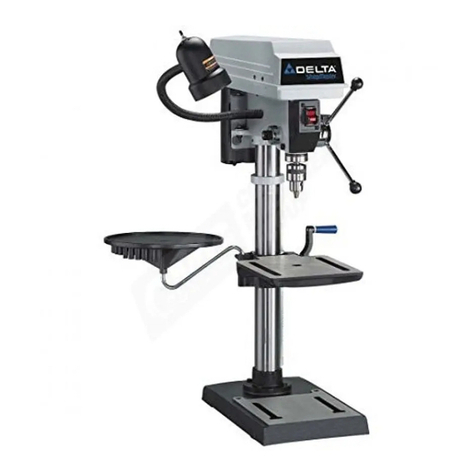
Delta
Delta DP300 User manual
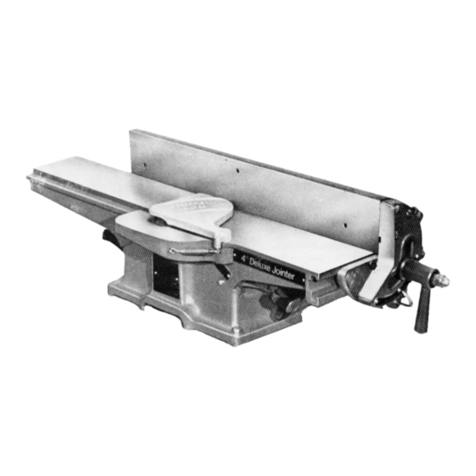
Delta
Delta 4'' Jointer User manual
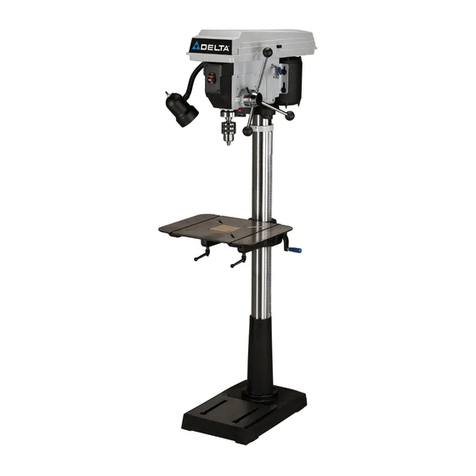
Delta
Delta 17-950L User manual
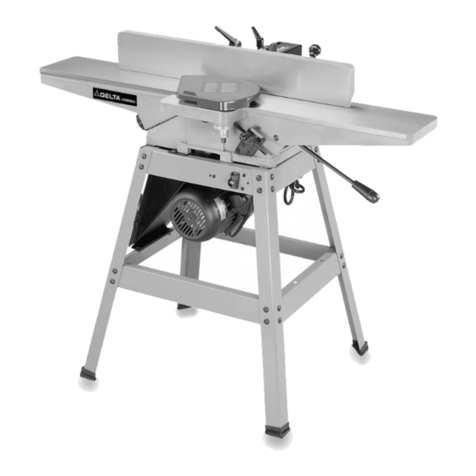
Delta
Delta Delta JT360 User manual
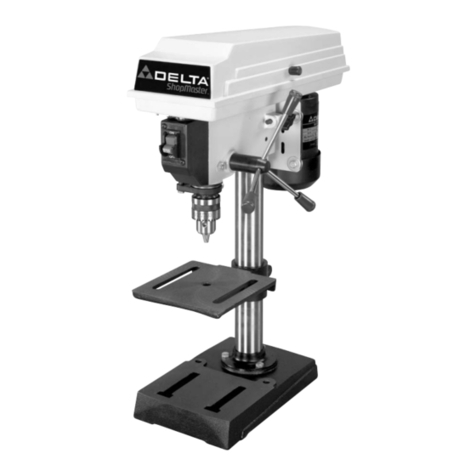
Delta
Delta ShopMaster DP115 User manual
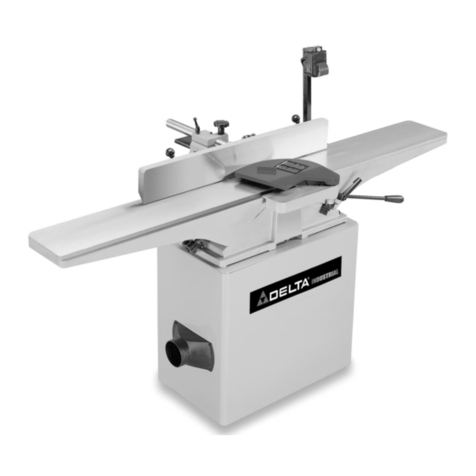
Delta
Delta 37-380 User manual

Delta
Delta 43-435 User manual
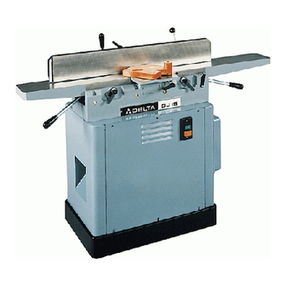
Delta
Delta DJ-15 User manual
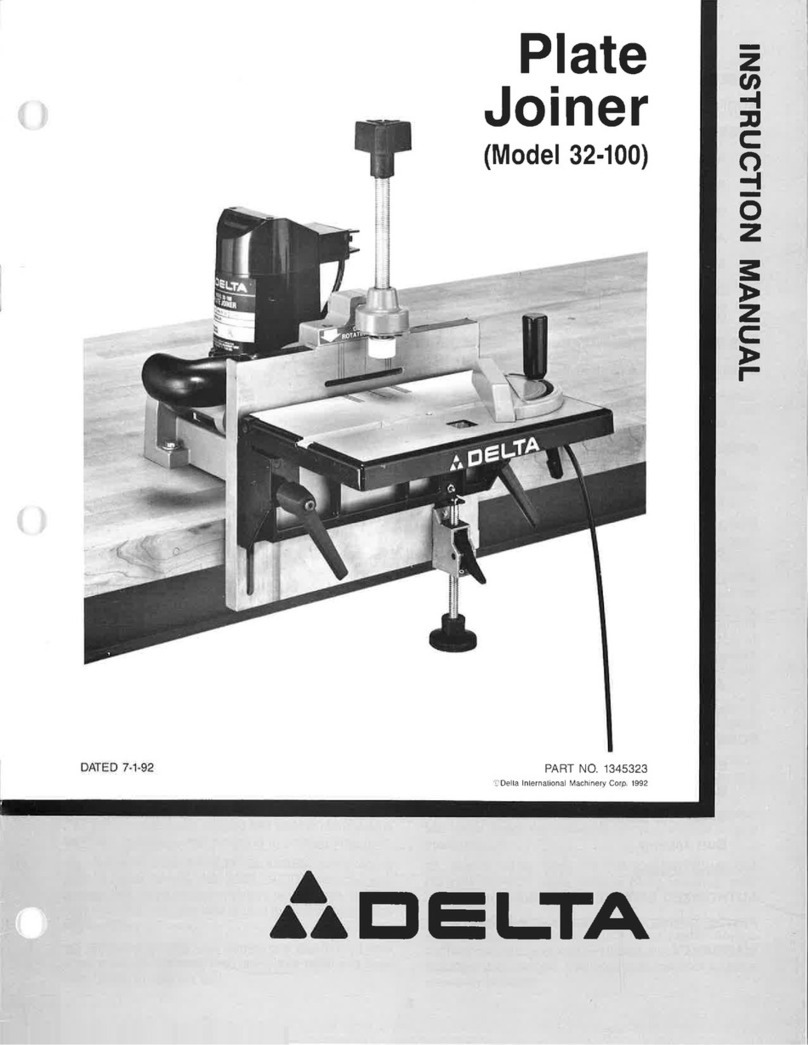
Delta
Delta 32-100 User manual
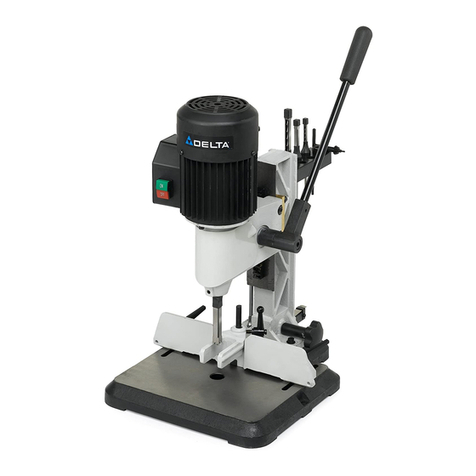
Delta
Delta 14-651 User manual
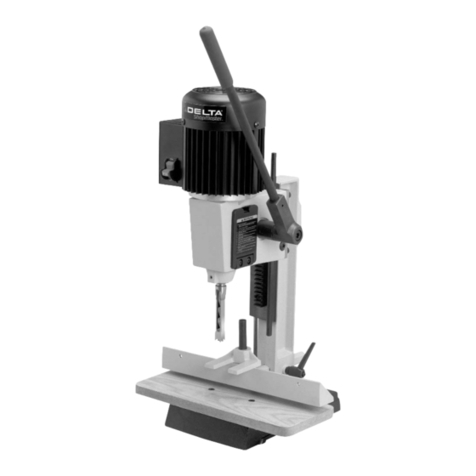
Delta
Delta ShopMaster MM300 User manual
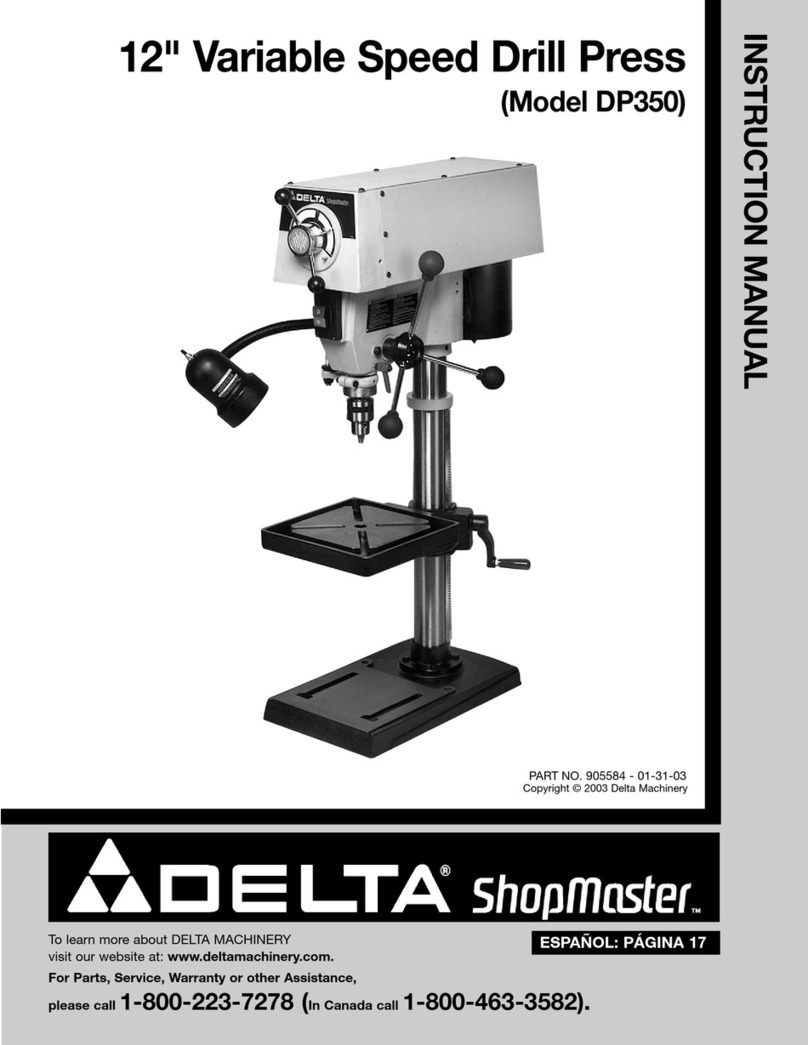
Delta
Delta ShopMaster DP350 User manual

Delta
Delta 23-675 User manual
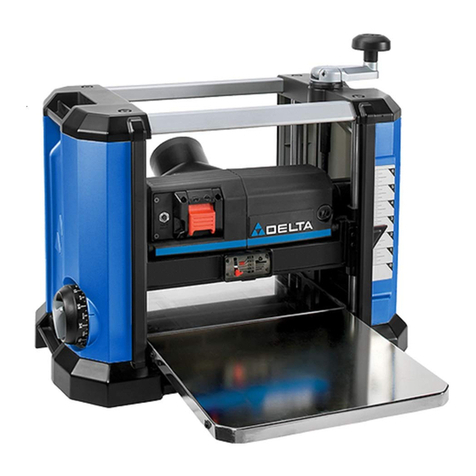
Delta
Delta 22-590X User manual
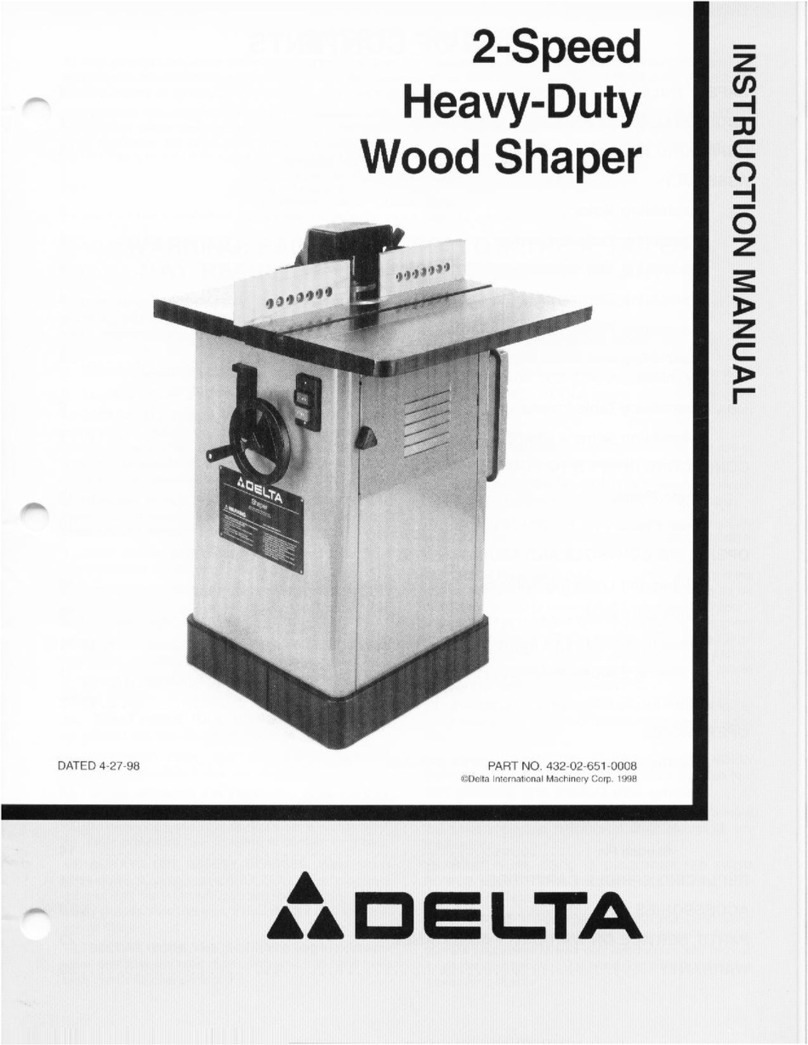
Delta
Delta 2-speed heavy-duty wood shaper User manual
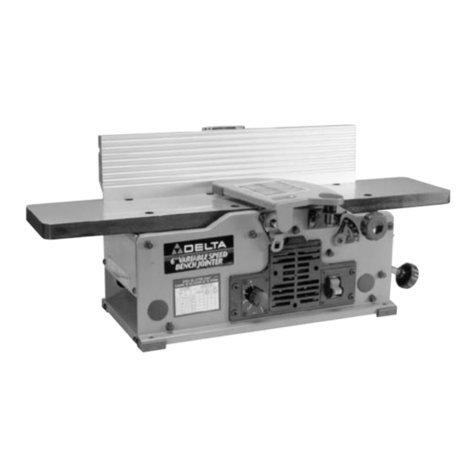
Delta
Delta 37-070 User manual
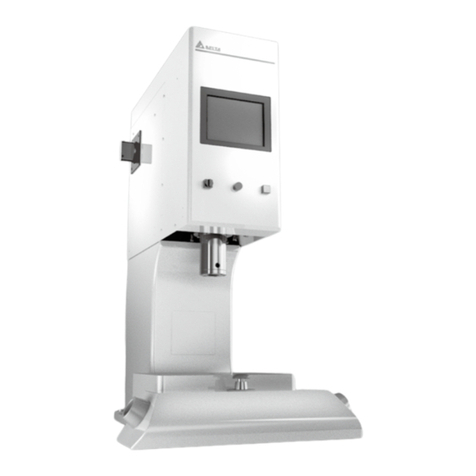
Delta
Delta S Series User manual
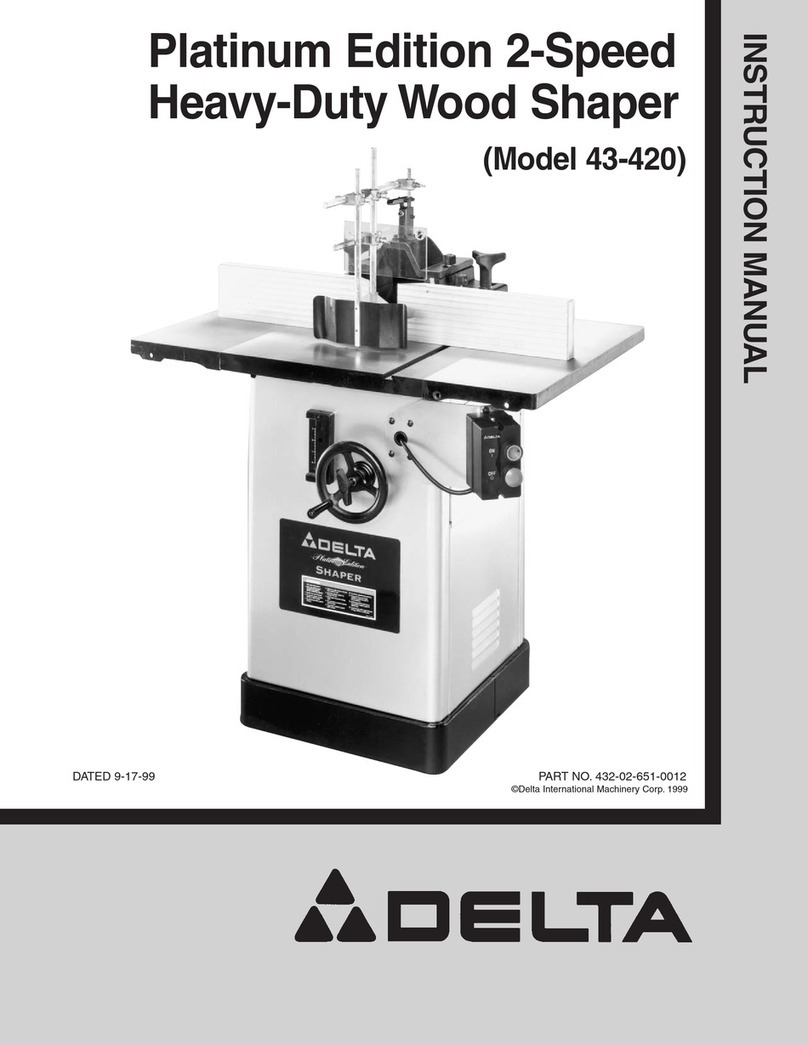
Delta
Delta Platinum Edition 43-420 User manual

Delta
Delta 36-205 User manual

Delta
Delta DJ-30 User manual
